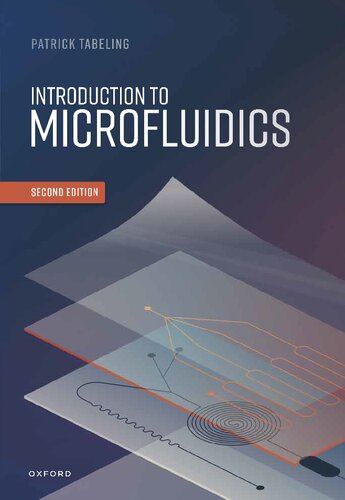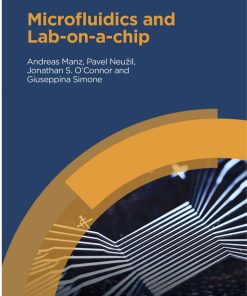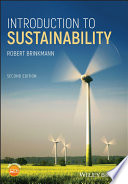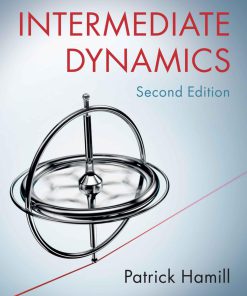Introduction to Microfluidics 2nd Edition by Patrick Tabeling ISBN 9780192845306 0192845306
$50.00 Original price was: $50.00.$25.00Current price is: $25.00.
Introduction to Microfluidics 2nd Edition by Patrick Tabeling – Ebook PDF Instant Download/Delivery: 9780192845306 ,0192845306
Full download Introduction to Microfluidics 2nd Edition after payment

Product details:
ISBN 10: 0192845306
ISBN 13: 9780192845306
Author: Patrick Tabeling
Introduction to Microfluidics 2nd Edition Table of contents:
1: Introduction
1.1 Astonishing microfluidic systems in nature
1.2 Exquisite microfluidic control in the human body
1.3 MEMS, the mother of microfluidics
1.4 The birth of microfluidics
1.5 The advent of soft technology
1.6 Diversification of the technology and broadening of the applications
1.7 MicroReaction Technology (MRT)
1.8 Nanofluidics
1.9 The microfluidic market
1.9.1 How to estimate the microfluidic market ?
1.9.2 Today’s market
1.10 Future of microfluidics
1.10.1 Microfluidics and Pasteur and Bohr quadrants
1.10.2 Promising areas of application
1.10.3 Microfluidics and its interactions with other fields
1.10.4 Microfluidics and complexity
1.10.5 Microfluidics and Artificial Intelligence
1.11 Reviews and books
1.11.1 Books
1.11.2 Reviews
1.11.3 In which journals do microfluidic researchers publish ?
1.12 Organization of the book
References
2: Physics at the microscale
2.1 The scales of small things
2.1.1 The system of units for small quantities
2.1.2 Sizes of ions and small molecules
2.1.3 Complex molecules, DNA, proteins
2.1.4 Visualization of DNA strands in a microfluidic device.
2.1.5 Viruses, bacteria and cells
2.1.6 Single cells manipulated in microfluidic droplets
2.1.7 Multicellular organisms
2.1.8 Mean free path in gases.
2.1.9 Correlation length in liquids.
2.1.10 Other scales
2.2 Intermolecular Forces – basics
2.2.1 Forces between molecules
2.2.2 Van der Waals forces between surfaces
2.2.3 Macroscopic manifestations of Van der Waals forces
2.2.4 Molecular Dynamic (MD) simulations of interfaces
2.2.5 Electrostatic forces between surfaces
2.2.6 Other forces.
2.3 Nano-Micro and Millifluidics
2.4 The physics of miniaturization
2.4.1 The Π theorem
2.4.2 The concept of scaling law
2.5 Scaling laws in nature
2.5.1 Mite clinging to a disk rotating at large speeds
2.5.2 Kleiber’s law
2.5.3 The short lifespan of small animals
2.5.4 The running of animals
2.5.5 The unpleasant life of the pygmy shrew
2.5.6 Pro and cons being small
2.5.7 Three errors in ’Honey, I Shrunk the Kids’ (Walt Disney)
2.6 Miniaturization of electrostatic systems
2.6.1 Dielectric breakdown is retarded in miniaturized systems
2.6.2 Miniaturization of capacitors
2.6.3 Electrostatic microactuators
2.6.4 The electrostatic micromotor
2.7 Miniaturization of electromagnetic systems
2.8 Miniaturization of mechanical systems – the vibrating microbeam
2.9 Miniaturization of thermal systems
2.10 Sampling and throughput
2.10.1 Microfluidics and low concentration samples
2.10.2 Microfluidics and throughput
References
3: Hydrodynamics of microfluidics 1: channels
3.1 The flow equations and the boundary conditions
3.1.1 The notion of fluid particle
3.1.2 The continuum hypothesis
3.1.3 The Navier-Stokes equations
3.1.5 Validity of the Navier-Stokes equations
3.1.6 The Reynolds number
3.1.7 The Stokes equation
3.1.8 The five virtues of Stokes equation
3.1.9 The Navier boundary condition
3.2 Slippage in gases
3.2.1 The different gas flow regimes
3.2.2 Gas flows in channels in the slip regime
3.3 Slippage in liquids
3.3.1 The friction model
3.3.2 Hydrodynamics of liquid flows with slippage
3.3.3 Slippage measurements in liquids over smooth walls
3.4 Microfluidics at small Reynolds numbers
3.4.1 Flows in channels with rectangular cross-sections
3.4.2 Flow around a sphere – the Stokes law
3.4.3 Flow around bubbles and droplets
3.4.4 Flows in Hele–Shaw cells
3.4.5 Flow along cavities – Moffatt eddies
3.4.6 Flow over patterned surfaces
3.4.7 Micro and nanofluidic Landau Squire jets
3.4.8 Miscible fluids flowing side by side in a Hele-Shaw cell
3.5 Resistances and capacitances in microfluidics
3.5.1 Flow generators in microfluidics
3.5.2 The hydrodynamic resistance
3.5.3 Two examples of microfluidic resistance networks
3.5.4 Hydrodynamic capacitance
3.5.5 Two examples of applications of the concepts of resistance and capacitance
3.6 Inertial microfluidics and millifluidics
3.6.1 Introduction
3.6.2 The phenomenon of boundary-layer separation
3.6.3 Centrifugal microfluidics
3.6.4 Dean vortices in curved channels
3.6.5 Millifluidics and micro reaction technology (MRT)
References
4: Hydrodynamics of microfluidics 2: droplets
4.1 Liquid–vapour interfaces
4.1.1 Microscopic phenomenology
4.1.2 Liquid vapour interfaces: energetical approach
4.1.3 The liquid–vapour interface: mechanical approach
4.1.4 Experiments
4.2 Laplace’s law
4.2.1 Establishment of Laplace’s law
4.2.2 Is Laplace’s law valid at the nanoscale?
4.2.3 Manifestations of Laplace’s law
4.2.4 Methods of measurement of interfacial tension
4.2.5 Surface tension and gravity
4.3 Surfactants
4.3.1 What is a surfactant?
4.3.2 Surfactant and solubility
4.3.3 Surfactants and surface tension
4.3.4 Marangoni flow
4.4 Wetting
4.4.1 The three fundamental cases of wetting
4.4.2 The spreading coefficient
4.4.3 Young’s equation
4.4.4 Experimental validation of Young equation
4.4.5 Is Young’s equation valid at the nanoscale?
4.4.6 Dewetting induced by surfactants – detergence
4.5 Droplets advancing on a surface
4.5.1 The physics of displacement
4.5.3 The important role of pinning and dewetting in dropletmicrofluidics
4.6 The governing equations and the capillary number
4.6.1 Dimensional reasoning and physical interpretation
4.6.2 Application to droplet break–up
4.6.3 What happens at large capillary numbers ?
4.7 The Landau–Levich and Bretherton films
4.7.1 The Landau–Levich film
4.7.2 The Bretherton film
4.7.3 An application of the Landau–Levich film: dip coating technology
4.8 The Rayleigh–Plateau instability
4.8.1 Physical mechanism
4.8.2 The break–up of nanojets
4.9 Washburn law and paper microfluidics
4.9.1 Washburn law
4.9.2 Paper microfluidics
4.10 Production of microfluidic droplets and bubbles
4.10.1 Early experiments
4.10.2 General behaviours
4.10.3 The T–junction
4.10.4 Flow focusing
4.10.5 Step emulsification
4.10.6 Producing droplets in glass capillaries
4.10.7 Other methods of droplet production
4.11 Characteristics of microfluidic droplets and bubbles
4.11.1 Obstructing and non–obstructing droplets
4.11.2 The excellent monodispersity of microfluidic droplets
4.11.3 How fast obstructing droplets move ?
4.11.4 Internal mixing of microfluidic droplets
4.11.5 Large pressure drops generated in channels by microfluidic droplets or bubbles
4.11.6 How do droplets break up?
4.11.7 Coalescence of microfluidic droplets
4.11.8 Microfluidic multiple emulsions
4.11.9 The microfluidic droplet toolbox
References
5: Transport in microfluidics
5.1 The microscopic origin of diffusion
5.1.1 Brownian motion
5.1.2 Normal and anomalous diffusion
5.1.3 The Stokes-Einstein law
5.2 Advection-diffusion equation and its properties
5.2.1 Fick law
5.2.2 Advection-diffusion equation
5.2.3 The Peclet number
5.3 Analysis of diffusion phenomena
5.3.1 Diffusion of a tracer in an infinite medium
5.3.2 Diffusion of a tracer in a box
5.3.3 Interface broadening
5.4 Analysis of dispersion phenomena
5.4.1 Plug flows, pure shear flows, and straining flows
5.4.2 Taylor dispersion in microchannels
5.5 Brief introduction to chaos and chaotic mixing
5.5.1 Chaos
5.5.2 Horshoe tranform, baker’s transform
5.5.3 Impossibility of generating chaos in 2D steady flows
5.5.4 Trajectories crossing at different times lead to chaos
5.5.5 Chaotic mixing in time dependent flows with hyperbolic points
5.6 Mixing in microfluidic devices
5.6.1 How to characterize mixing ?
5.6.2 Mixing index in a box.
5.6.3 The problem of the slowness of diffusion.
5.6.4 A tour in the world of micromixers
5.6.5 Reducing sizes to speed up mixing
5.6.6 The herringbone micromixer
5.6.7 The rotary micromixer
5.6.8 The cross-channel micromixer
5.6.9 Mixing in droplets
5.6.10 Mixing at moderate Reynolds numbers
5.7 Four applications of transport of matter in microfluidics
5.7.1 Example 1: measurement of fast reaction kinetics in Y–junctions
5.7.2 Example 2 :measurement of fast reaction kinetics in droplets and screening of chemical reactio
5.7.3 Example 3: shaping concentration fields
5.7.4 Example 4: Lipid Nano Particles production in inertial micromixers
5.8 Transport of matter across interfaces
5.8.1 Basics
5.8.2 Microfluidic liquid–liquid extraction
5.8.3 Bubbles and droplet dissolution: the Epstein-Plesset theory
5.8.4 The long lifetime of surface nanobubbles
5.9 Particles and microfluidics
5.9.1 How do small particles diffuse close to a wall?
5.9.2 Particles deposition at low Reynolds numbers
5.9.3 Clogging
5.9.4 Three methods of sorting particles
5.10 Particles in inertial regimes
5.11 Adsorption
5.11.1 Generalities
5.11.2 Langmuir isotherm
5.12 Chromatography
5.12.1 Principle of chromatography
5.12.2 Different types of chromatography
5.12.3 Performances of the columns
5.12.4 First miniaturization of a gas chromatographic column: Terry (1975)
5.12.5 Is it worth miniaturizing chromatographic columns ?
5.13 Thermal transport by conduction
5.13.1 Conduction of heat in gases, liquids, and solids
5.13.2 Fourier’s Law
5.13.3 The heat diffusion equation
5.13.4 Three examples
5.14 Convection-diffusion heat equation and properties
5.14.1 The notion of heat transfer coefficient
5.14.2 Convective heat transfer
5.15 Heat transfer in the presence of a flow in microsystems
5.15.1 The laminar thermal boundary layer
5.15.2 How long does it take to thermalize a fluid entering a microdevice?
5.15.3 Application: microfluidic polymerase chain reaction (PCR)
5.15.4 Heat transfer in microchannel flows far from the entry (developed region)
5.15.5 Why do bird legs not freeze in winter?
5.16 Evaporation and drying
5.16.1 Generalities
5.16.2 How long does it take for an isolated spherical droplet to dry?
5.16.3 How long does it take for a surface droplet to dry?
5.17 Microexchangers for electronic components
5.17.1 The considerable needs of cooling of data centres
5.17.2 Old method
5.17.3 Optimizing microexchangers
References
6: Electrokinetics
6.1 Introduction
6.2 Basic notions of electrostatics of macroscopic media
6.2.1 Governing equations
6.2.2 Boundary conditions
6.2.3 Electric field in dielectric slabs
6.2.4 Dielectric sphere in an uniform electric field
6.2.5 The analogy between dielectric and conducting systems
6.3 The electrokinetic equations
6.3.1 Charge density, conductivity, diffusion constant,…
6.3.2 The electrokinetic equations for a single ion species
6.4 The electrical double layer
6.4.1 Origin of the surface charges
6.4.2 Gouy Chapman and Stern models
6.4.3 The electric field in the diffuse layer
6.4.4 Divergence of the charge density
6.4.5 Debye layers in microchannels
6.4.6 The Debye layer around a sphere
6.4.7 The diffuse layer capacitor
6.4.8 Dependence of the ζ potential with pH and ion concentration
6.5 Electro-osmosis
6.5.1 Electro-osmotic flows in channels
6.5.2 The similarity principle
6.5.3 Slippage amplification
6.5.4 Three microfluidic applications or implications of electro-osmosis
6.5.5 Streaming potential
6.6 Electrophoresis
6.6.1 The physics of electrophoresis
6.6.2 Case (a): Debye length much larger than the particle (κR << 1)
6.6.3 Case (b): Debye length much smaller than the particle κR >> 1
6.6.4 The Henry function
6.6.5 The case of perfectly conducting spheres
6.6.6 The electrophoretic mobility of ions
6.6.7 The electrophoretic mobility of DNA
6.6.8 Particle deposition in microchannels with electrically charged walls
6.7 Microfluidic electrokinetic separation
6.7.1 Acronyms
6.7.2 Free solution capillary electrophoresis (FSCE)
6.7.3 The performance of free solution capillary electrophoresis
6.7.4 Miniaturizing free solution capillary electrophoresis
6.7.5 The first microchip capillary electrophoresis (MCE) system (1992)
6.7.6 Micellar electrokinetic chromatography (MEKC)
6.7.7 Capillary electrochromatography (CEC) and DNA separation
6.8 Dielectrophoresis
6.9 Three illustrations/applications of dielectrophoresis
6.9.1 Capturing submicrometric particles
6.9.2 Droplet becoming rectangular in an AC electric field
6.10 Electrowetting
References
7: An introduction to microfabrication
7.1 Introduction
7.2 Current situation of microtechnologies
7.2.1 Hard, plastic and soft technologies
7.2.2 Tolerances
7.3 The environment of microfabrication
7.3.1 The environment of microfabrication
7.3.2 Using or not using clean rooms for microfluidics
7.4 Photolithography
7.4.1 Introduction
7.4.2 Photolithography masks
7.4.3 Deposition of the photoresist
7.4.4 Exposure
7.4.5 Commonly used resists and the development step
7.5 Direct writing or maskless photolithography
7.6 Microfabrication methods for silicon and glass devices
7.6.1 Silicon as a microfabrication material
7.6.2 Wet etching of silicon and glass
7.6.3 Dry etching of silicon
7.6.4 Techniques of deposition onto silicon and glass
7.6.5 Bonding
7.6.6 Application: fabrication of a silicon membrane
7.6.7 Micropump for insulin injection
7.6.8 Electron beam lithography – Nanoguitar
7.7 PDMS-based moulding – soft lithography
7.7.1 Historical note
7.7.2 PDMS Characteristics
7.7.3 How to make PDMS channels ?
7.7.4 Remarks on PDMS
7.7.5 Flow lithography
7.7.6 Microcontact printing
7.7.7 PDMS valving and pumping
7.8 Computer Numerical Control (CNC) Micromilling
7.9 3D Printing or Additive Manufacturing (AM)
7.10 Paper microfluidics
7.10.1 Background
7.10.2 Paper microfluidics functionalities
7.11 Other technologies
7.11.1 Casting
7.11.2 Microinjection
7.11.3 Laser ablation
7.11.4 Sticker technology
7.11.5 Actuators based on responsive hydrogels
References
Index
People also search for Introduction to Microfluidics 2nd Edition:
why is microfluidics important
what is microfluidics technology
introduction to microfabrication
introduction to microfluidics ppt
an introduction to fluid dynamics batchelor pdf
Tags: Patrick Tabeling, Introduction, Microfluidics
You may also like…
Biology and other natural sciences - Plants: Botany
Mathematics - Logic
A Concise Introduction to Logic (14th Edition) by Patrick J. Hurley 9780357798683 0357798686
Chemistry - Technical & Industrial Chemistry
Mathematics - Analysis
Earth Sciences - The Environment
Introduction to Sustainability 2nd 2nd Edition Robert Brinkmann
Physics - Mechanics
Uncategorized
Politics & Philosophy - Government & Politics











